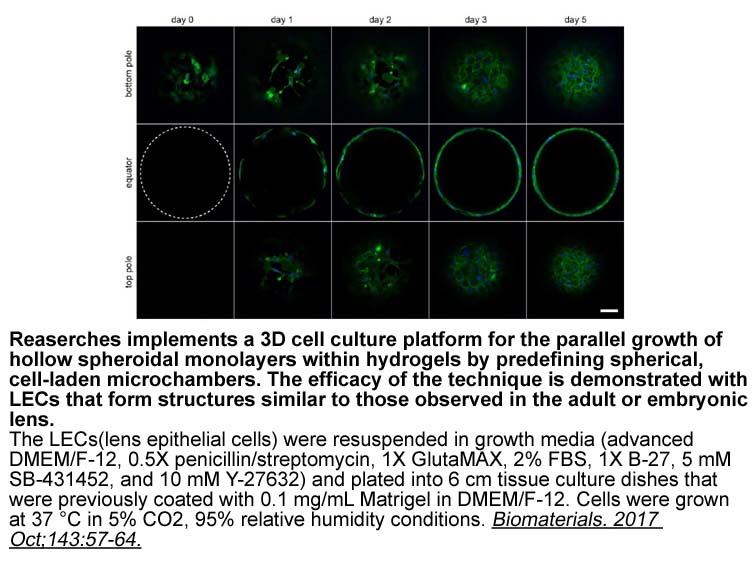Archives
br Conclusions We have shown
Conclusions
We have shown that despite the development of severe insulin intolerance and marked alterations in whole body substrate oxidation that Gcgr−/− mice are protected against olanzapine-induced hyperglycemia. Our data provides evidence that this protective effect is likely due in large part to reductions in liver glucose output that are secondary to decreases in the protein content of gluconeogenic enzymes such as PEPCK and G6Pase. Our work points towards the liver as being a central contributor to the acute olanzapine-induced disturbances in glucose homeostasis and highlights the importance of identifying approaches to mitigate olanzapine-induced increases in liver glucose production.
Author contributions
Funding
LNC was supported by an Ontario Graduate Scholarship. WTP was supported by a Queen Elizabeth II Scholarship in Science and Technology. CDS received an Undergraduate Student Research Award from the Natural Sciences and Engineering Research Council of Canada (NSERC). This research was supported by an NSERC Discovery Grant to DCW. DCW is a Tier II Canada Research Chair. The funders were not involved in the study design, collection, analysis and interpretation of data and in writing of the manuscript.
Introduction
Glucagon is the key counter-regulatory hormone to insulin. It raises circulating glucose, plays a critical role in the counter-regulation of hypoglycemia and contributes to hyperglycemia in type 2 diabetes [1]. Mature active glucagon is produced in islet alpha Amiloride HCl dihydrate by cleavage of proglucagon by prohormone convertase 2 (PC2) into glucagon, glucagon related polypeptide and the major proglucagon fragment. The glucagon receptor is also upregulated in beta cells in response to increasing concentrations of glucose [2], [3], [4]. This may have important physiological consequences in diabetes as fasting and postprandial glucagon levels are elevated due to a loss of negative control by insulin [5] and impaired suppressive action of glucose. However, the consequence of increased glucagon receptor expression in beta-cells is not known. In order to understand beta cell function in a state of enhanced beta cell glucagon action, mice with a beta cell specific overexpression of the glucagon receptor have been developed [6]. This model allows for studies to explore whether enhanced beta cell glucagon receptor expression perturbs insulin secretion and to that end, we performed a comprehensive analysis of insulin secretion in this model, with special emphases on the complex and multifaceted regulation of beta-cell function. Thus, beta-cell secretion is normally regulated not only by glucose, but also by glucagon like peptide 1 (GLP-1), amino acids and neurotransmitters, together fine-tuning beta cell function. The signals mediating the beta-cell stimulation by these secretagogues are different and therefore a comprehensive analysis of several secretagogues is important to establish the complete consequence of glucagon receptor overexpression. We  thus undertook intravenous glucose tolerance tests with and without exogenous administration of glucagon, GLP-1, arginine and the cholinergic muscarinic receptor agonist carbachol in mice with beta cell specific overexpression of glucagon receptors and their wild-type counterparts. We find that enhanced glucagon action on the beta cell results in dissociated effects on different aspects of beta cell function.
thus undertook intravenous glucose tolerance tests with and without exogenous administration of glucagon, GLP-1, arginine and the cholinergic muscarinic receptor agonist carbachol in mice with beta cell specific overexpression of glucagon receptors and their wild-type counterparts. We find that enhanced glucagon action on the beta cell results in dissociated effects on different aspects of beta cell function.
Materials and methods
Results
Discussion
Glucagon is a multi-faceted islet hormone that plays a key role in the pathophysiology of type 1 and type 2 diabetes [9]. It has been demonstrated that beta cell expression of the glucagon receptor is increased by hyperglycemia and that glucagon receptor action is necessary to maintain beta cell glucose competence [10]. Therefore, perturbed beta cell action of glucagon would be expected in type 2 diabetes although this has not been established yet. In type 2 diabetes, hyperglucagonemia is one of multiple factors that contribute to altered beta cell function along with islet inflammation, lipotoxicity and others. Commonly used models for the study of diabetes such as db/db and diet induced obese mice have alterations in many of these factors making it difficult to ascertain the specific role of increased glucagon action on beta cell function. A model to examine the physiological consequences of increased beta cell glucagon receptor expression and action in vivo has been recently developed by using mice with beta cell specific overexpression of the glucagon receptor [6]. The mice were initially characterized by having enhancement of beta cell function, mass and insulin content, which resulted in resistance to high fat diet induced glucose intolerance. However, information regarding intravenous glucose tolerance of this model has not been reported and, therefore, whether beta cell glucagon receptor overexpression indeed is associated with increased beta cell function, independent of inflammation, lipotoxicity and other factors, is not known.